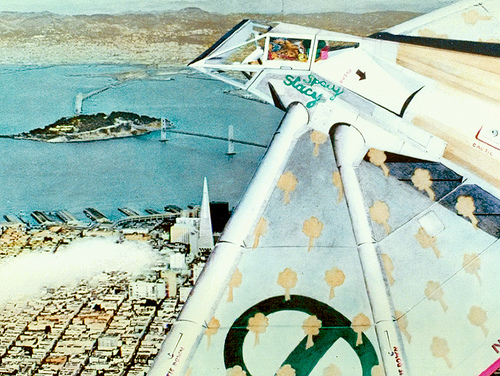 [Image: By Craig Hodgetts, from his prospective drawings for a film adaptation of Ecotopia].
[Image: By Craig Hodgetts, from his prospective drawings for a film adaptation of Ecotopia].
Over on the Architect’s Newspaper Blog, Ken Saylor takes a look at the novel Ecotopia, recently discussed by The New York Times. Amusingly, that novel’s key phrases, according to Amazon.com, include “extruded houses,” “ritual war games,” “forest camp,” and “San Francisco.”
However, what the NYT fails to mention, Saylor adds, is that, in 1978, architect Craig Hodgetts “produced a wondrous set of drawings for a Hollywood movie adaptation of the pulp classic. With plenty of savvy and pop-culture sensibility, the script was translated into awe-inspiring architectonic visuals. The drawings were exhibited and published, but alas, the project never made it to the silver screen.”
The images include solar-powered, high-speed maglev trains that “utilize a ‘lifting body’ profile to reduce gravity forces at speed, allowing lightweight bridges that act in tension rather than compression,” as well as “balloon generators over San Francisco Bay,” complete with their associated “maintenance gondolas.”
Check out the original post for more images – with captions by Hodgetts himself – and more information about the unfortunately undeveloped film adaptation.
However, I have to add, briefly, that architecture is by its very nature a specific form of science fiction: whether we’re using it to design luxury high-rises, modular refugee camps, solar towers, or complete urban ecotopias, architecture gives us the means, on par with literature and mythology, through which we can re-imagine the world.
Architecture, by definition, is speculation about the future.
I wonder how many of the people criticizing ECOTOPIA actually read it beginning to end? Kvetching, for example, about the black separatists when the author himself made it clear that he wasn’t sure it was a good thing seems a mite hasty.